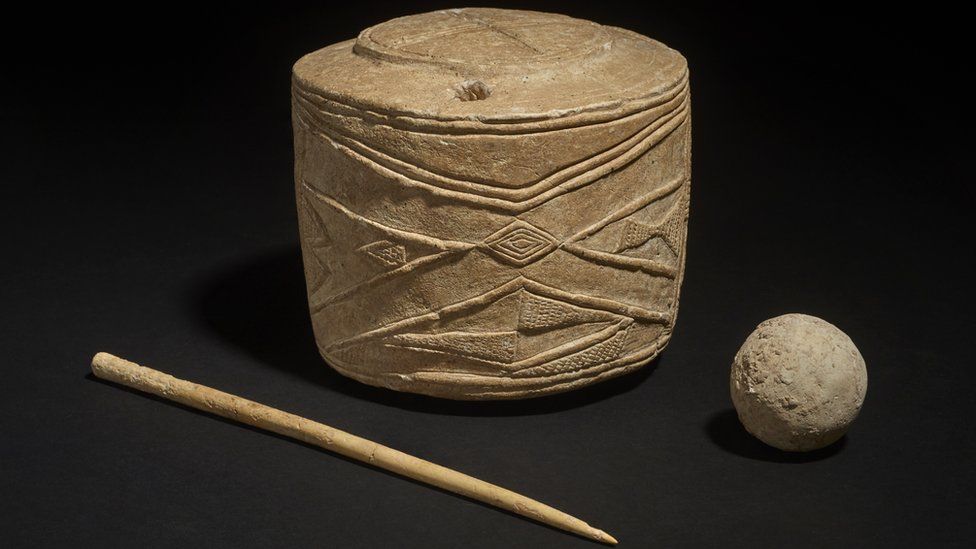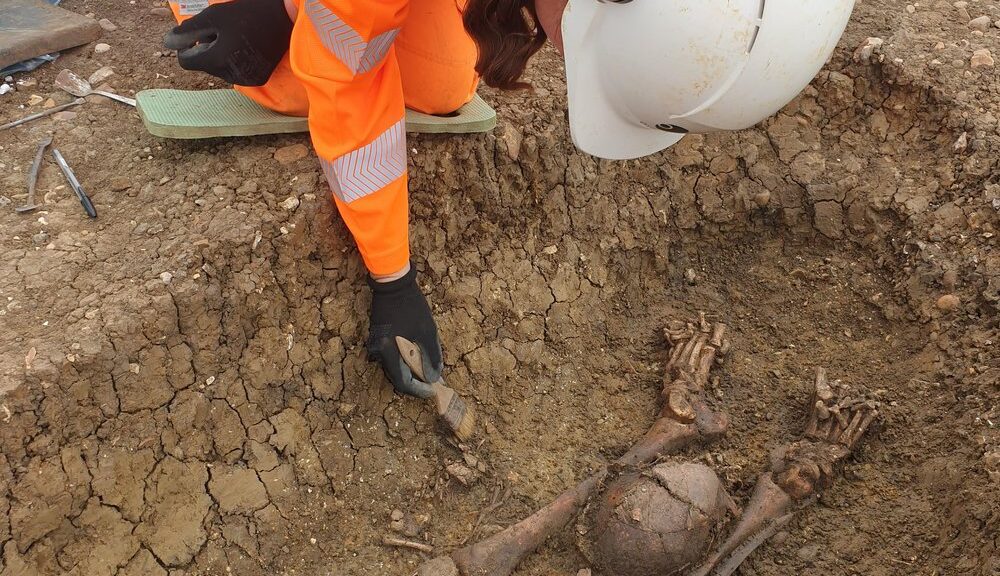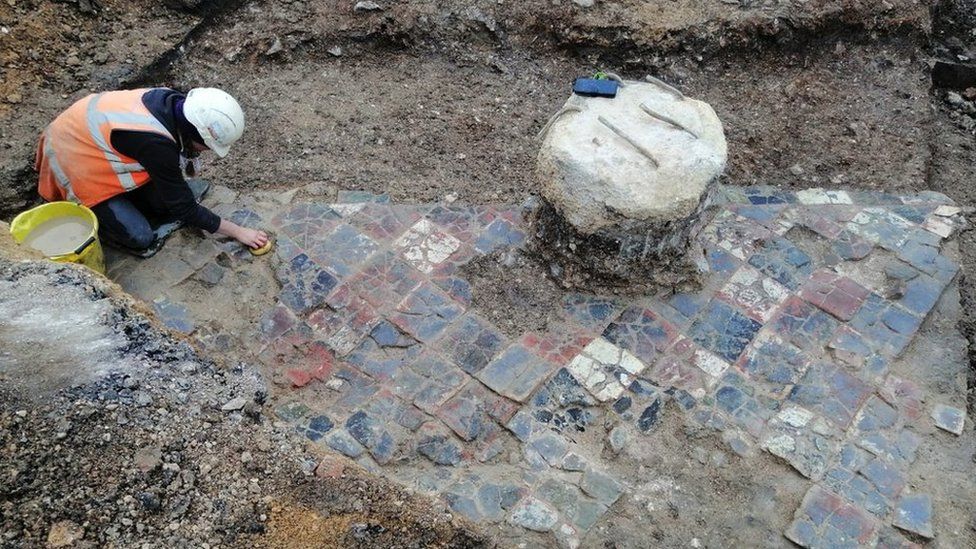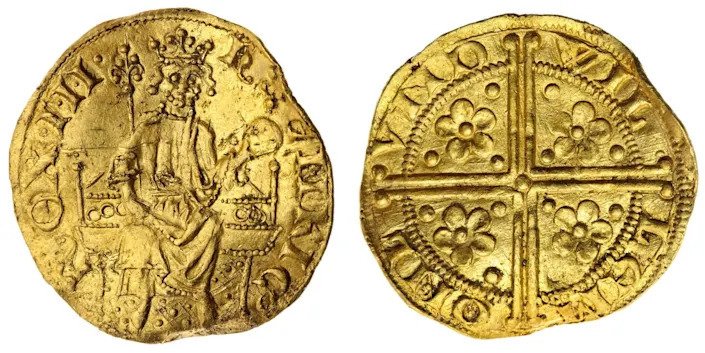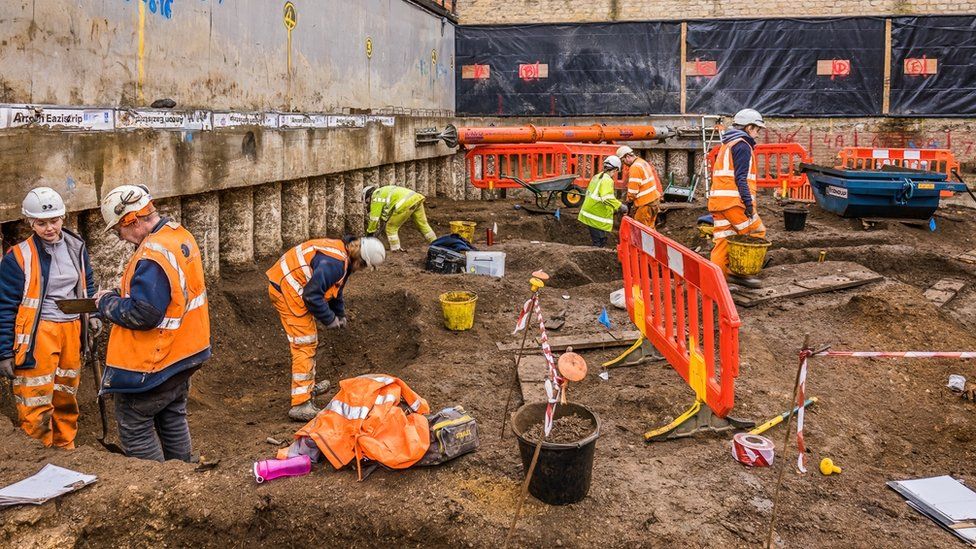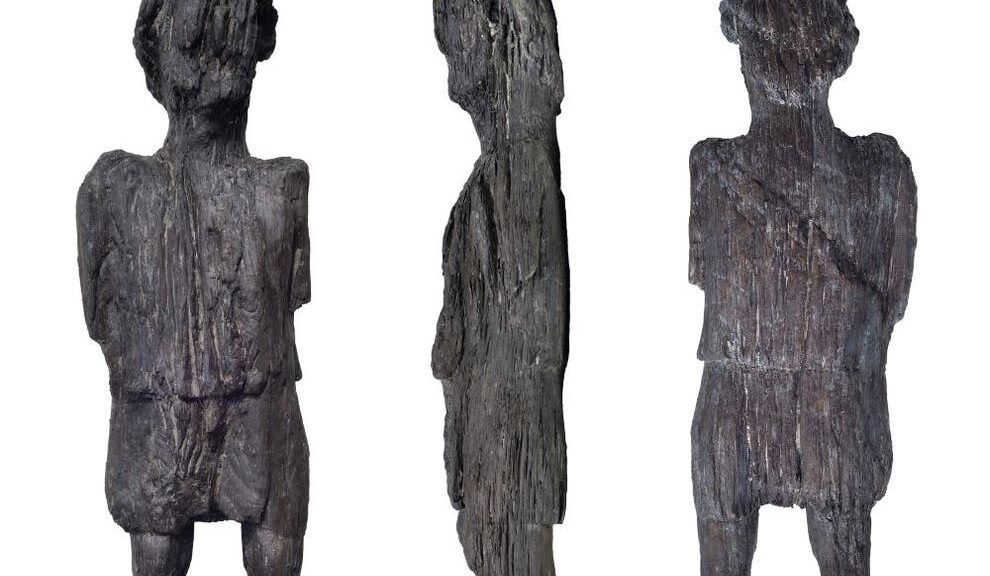Chalk drum from 5,000 years ago is ‘most important art find’ in a century
A 5,000-year-old chalk sculpture discovered in east Yorkshire, due to be displayed at the British Museum, has been described as the most important piece of prehistoric art to be found in Britain in the last century.

The object, which archaeologists have named the “Burton Agnes drum”, is a chalk sculpture that had been decorated with motifs similar to the artistic style at the same time as Stonehenge was built. The drum was discovered alongside the burial of three children.
The drum is hailed to be such an important discovery due to its similarity to a group of objects already in the British Museum’s collection.


The Folkton drums, three barrel-shaped cylinders made of chalk, were found in North Yorkshire buried alongside the remains of a child, and have been part of the British Museum’s collection since 1889. They are, according to the British Museum, some of the “most famous and enigmatic ancient objects ever unearthed in Britain”.
Relatively little is known about the Folkton drums and their context but this new drum, which was found about 15 miles away, sheds new light on them.
The exact age of the Folkton drums was never known, with a consensus guess that they were made around 2500 – 2000BC.
However, due to new technology and the finding of the new drum, the Folkton drums can be identified as being nearly 500 years older than previously thought.
This new discovery, only the fourth example of its kind known to have survived, is nearly identical to the Folkton drums and can also be described as a chalk drum.
Despite the use of the term ‘drum’, they are not thought to have had a musical function. Instead, they are works of sculptural art and have been interpreted to be intended as talismans to protect the deceased children they accompanied.

The Burton Agnes drum is due to be displayed to the public for the first time on Thursday, alongside all three Folkton drums, as part of the World of Stonehenge exhibition at the British Museum.
Neil Wilkin, the curator of The World of Stonehenge at the British Museum, said the discovery was “truly remarkable”.
“The Folkton drums have long remained a mystery to experts for well over a century, but this new example finally begins to give us some answers. To my mind, the Burton Agnes drum is even more intricately carved and reflects connections between communities in Yorkshire, Stonehenge, Orkney and Ireland,” he said.
“The discovery of the Burton Agnes grave is highly moving. The emotions the new drum expresses are powerful and timeless, they transcend the time of Stonehenge and reflect a moment of tragedy and despair that remains undimmed after 5,000 years,” he added.
“We are honoured that the British Museum will be the first place the public will be able to see this important object and that they will see it alongside 430 other ancient items telling the spectacular story of Stonehenge and the vibrant world in which it was built.”
Mark Allen, the director of Allen Archaeology, said that it has been a “real privilege” to have been involved in its discovery, and took the opportunity to thank the “landowners for their enthusiasm and interest in the project from the outset.”
“When we heard about the find from the team on-site and saw the photos of the drum that were messaged over to us, it was clear we were looking at something extraordinary,” he said. “Although the photos did not do it justice, and we were all stunned to see it up close when it came off-site.”
Alice Beasley, who first uncovered the drum as an archaeologist for Allen Archeology, said discovering it was a “thrilling and humbling” experience. “Seeing the love and effort put into burying the individuals over 5,000 years ago was truly moving,” she said.
The World of Stonehenge exhibition at the British Museum, on display until mid-July, is the UK’s first major exhibition on Stonehenge. Nearly two-thirds of the objects on display will be loaned from 35 lenders across several different countries, including Germany, Denmark and Italy.
